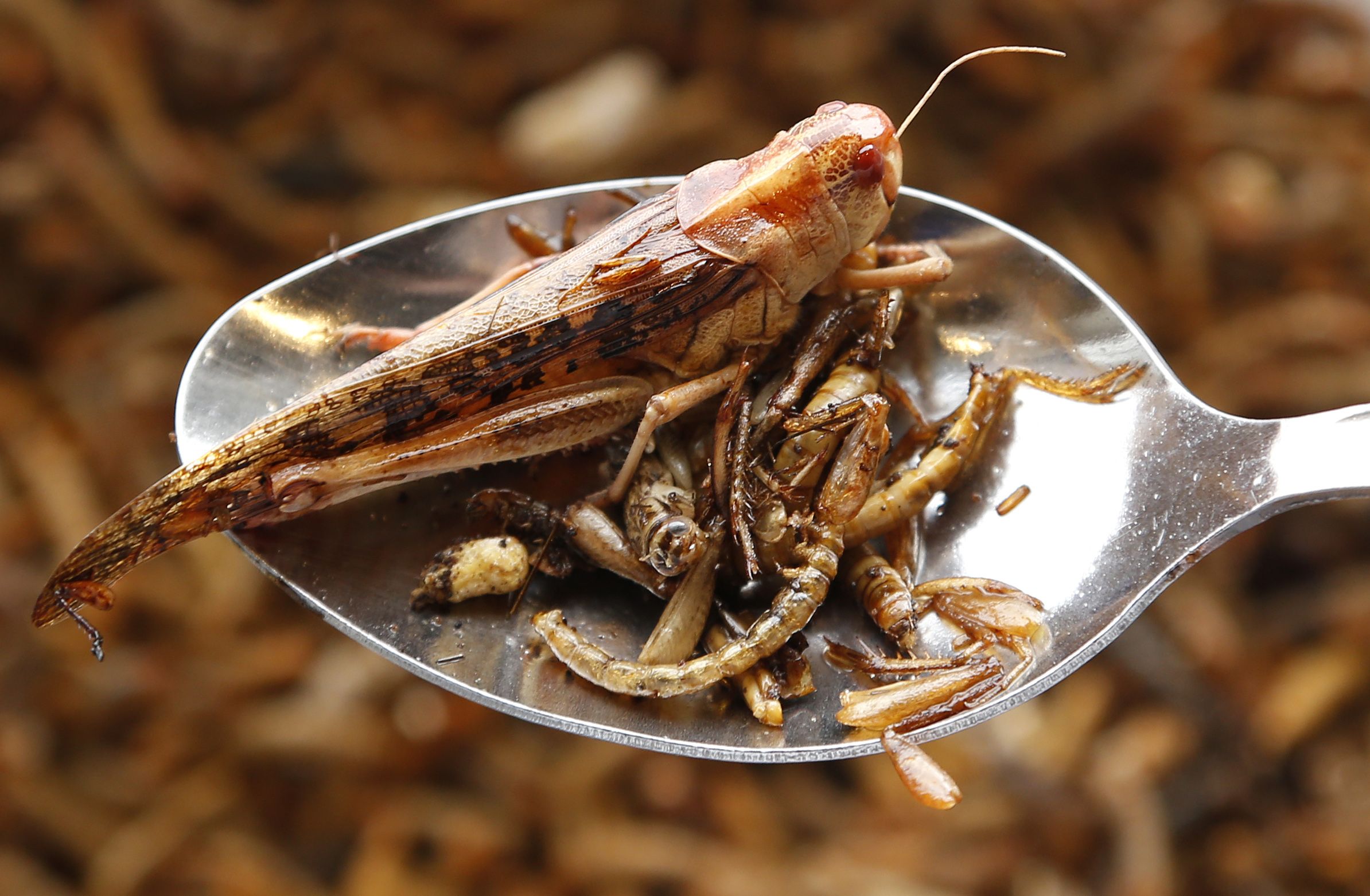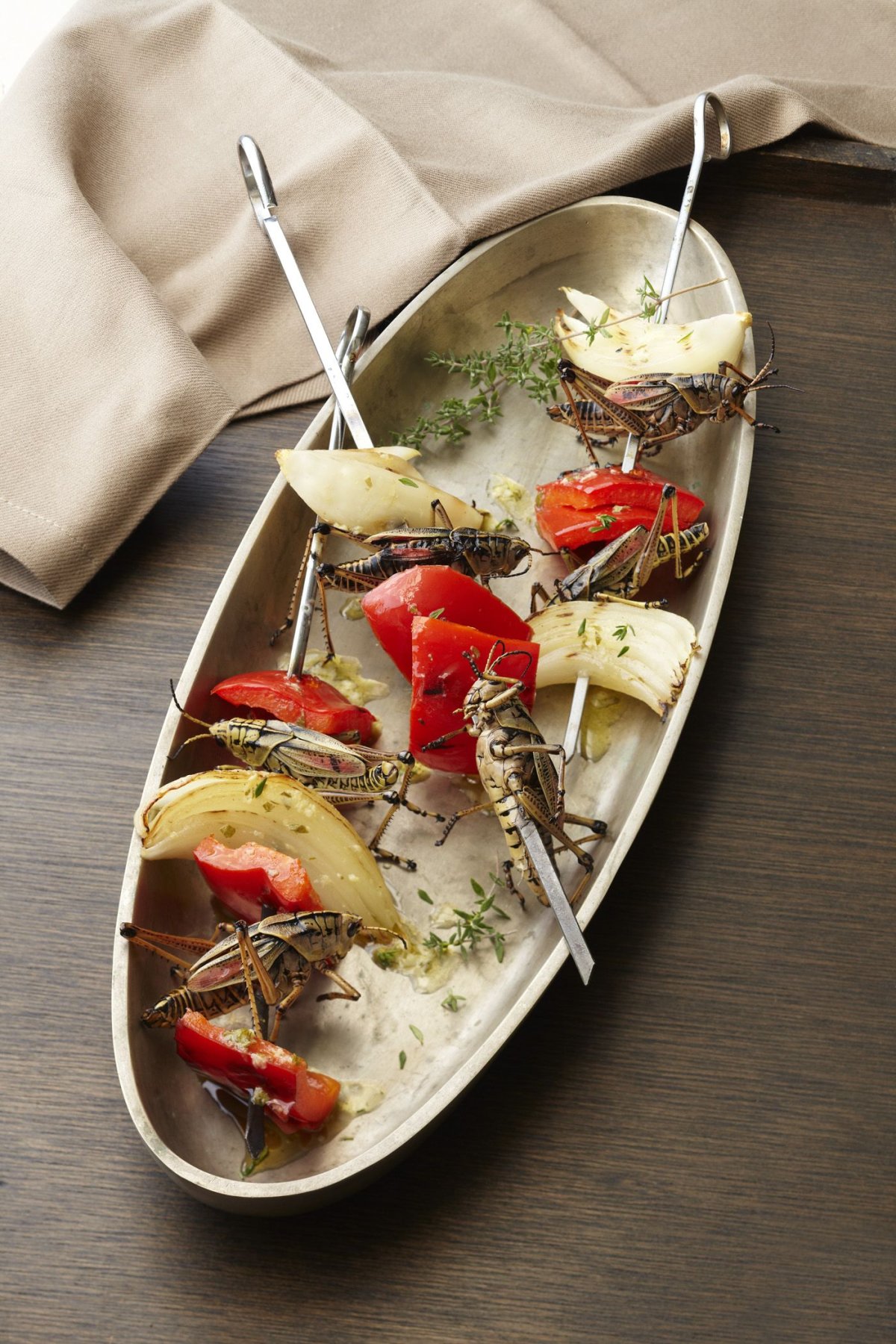
About 80 percent of the world already eats insects, which are a fantastic source of protein. As Americans prepare for this year's Thanksgiving meal, perhaps it's time to consider the many merits of a bugcentric holiday feast.
Insects are a food source in many places in the world for good reason. Fried grasshoppers, as The New Yorker has reported, are excellent sources of iron and zinc, and contain three times as much protein as an equivalent serving of beef. In West Africa, they're an invaluable staple for warding off a dangerous protein deficiency known as kwashiorkor. According to PBS, a single 6-ounce serving of crickets has less than half the saturated fat as the same amount of ground beef (plus twice the vitamin B12).
There are the holdouts who prefer honey-baked ham, but turkey is pretty unquestionably the reigning Thanksgiving centerpiece. Aside from the fact that people like the taste, turkey is a popular meat in the country because it seems both healthy and environmentally friendly. Those things are true, sure, but really only in the context of comparing turkey to beef. Cows use at least 11 times more water than turkey and nearly 30 times more land. Add in the sheer volume of methane gas produced by our country's cattle (grass-fed or not) and the fact that red meat is also very bad news for your heart and yes, turkey is a great choice.
But the benefits of turkey still don't stack up to the benefits of bugs. In future Thanksgivings, you might be persuaded to swap out turkey for crickets, which is also what you will be met with after suggesting this to your loved ones.
"I do realize that insects do have a bad rap," California Academy of Sciences entomologist Brian Fisher told PBS. "Most people see insects are pests or as dangerous. But it's just the opposite. Insects are less dangerous and less of a problem for humans in terms of disease."
Insects are also environmentally friendly, broadly accessible, and affordable. Cricket farming produces 100 times less greenhouse gas and requires 22,000 times less water than beef farming, and this is to yield an equal volume of product.
Insect protein also can be powdered, and no more resembles the original bug than a burger resembles a cow. According to one curious taster, most kinds have a mild, slightly earthy taste, sort of like nuts. To get you in the Thanksgiving spirit, here's a recipe for a bug-based main dish and another for a side. (If you're allergic to shellfish you might be allergic to some bug species, so consult your doctor first.)
Enjoy.

From Chef David George Gordon
Sheesh! Kabobs
Makes 6 kabobs.
Marinade
½ cup lemon juice
1 tablespoon olive oil
1 teaspoon honey
1 tablespoon Dijon mustard
½ teaspoon freshly grated ginger root
2 tablespoons minced fresh herbs—parsley, mint, thyme and/or tarragon
¼ teaspoon salt
pinch of freshly ground pepper
Orthoptera
12 frozen katydids, grasshoppers, or other large-bodied orthoptera, thawed
1 red pepper, cut into 1½-inch chunks
1 small yellow onion, cut into 8 wedges
Olive oil, as needed
1. Mix all ingredients for the marinade in a nonreactive baking dish. Add the orthoptera, cover, and marinate overnight.
2. When ready to cook, remove the insects from the marinade. Pat them dry for ease of handling. Assemble each kabob, alternately skewering the insects, red peppers and onion wedges to create a visually interesting lineup.
3. Brush the grill lightly with olive oil. Cook the kabobs 2 to 3 inches above the fire, turning them every two to three minutes and basting them with additional olive oil as required. The exact cooking time will vary, depending on the kind of grill and types of insects used; however, the kabobs should cook for no longer than 8 to 9 minutes.
From Chef Aarón Sánchez
Guacamole With Chapulines (Toasted Grasshoppers)
Makes 2 to 3 servings.
6 ripe Hass avocados
4 limes, juiced
2 serrano peppers, seeded and finely diced
1¼ Spanish onions, finely diced
¾ bunch of cilantro leaves, chopped
sea salt to taste
1 tablespoon cotija cheese
1 radish, chopped into matchsticks
5 to 6 grasshoppers (can be store bought and pretoasted/-seasoned)
1 teaspoon chile powder
1. Cut avocados in half and scoop flesh into a large bowl.
2. Mash the avocados with a balloon whisk until mashed but still slightly chunky.
3. Mix the juice of 3 limes, serrano peppers, onions and cilantro with the avocados. Add salt to taste.
4. Place guacamole in serving bowl, garnish with cotija cheese and matchstick radishes.
5. For more authenticity, add toasted grasshoppers. To make at home: Toast on stovetop in a dry, flat pan until crispy. Chop and coat with juice of one lime and chile powder and add for a final garnish.
Uncommon Knowledge
Newsweek is committed to challenging conventional wisdom and finding connections in the search for common ground.
Newsweek is committed to challenging conventional wisdom and finding connections in the search for common ground.
About the writer
Kastalia Medrano is a Manhattan-based journalist whose writing has appeared at outlets like Pacific Standard, VICE, National Geographic, the Paris Review Daily, ... Read more
To read how Newsweek uses AI as a newsroom tool, Click here.








